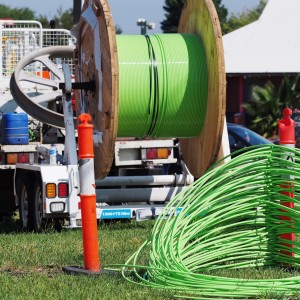The Federal Communications Commission on Wednesday said Internet service providers in the U.S. are, for the most part, supplying the connection speeds they advertise to consumers — speeds have tripled in the last three years, according to an annual agency report.
According the FCC’s fifth “Measuring Broadband America” report, the average maximum advertised speeds increased 94 percent from 37.2 megabits per second in September 2013 to 72 Mbps in September 2014, with cable download speeds specifically increasing from 12-20 Mbps in March 2011 to 50-105 Mbps in September 2014.
“Today’s report confirms that advances in network technology are yielding significant improvements in broadband speeds and quality,” FCC Chairman Tom Wheeler said in a statement. “Faster, better broadband will unleash new innovations and new services to improve the lives of the American people. This comprehensive assessment of broadband performance helps to keep consumers informed and hold ISPs accountable.”
Cable, satellite and fiber services on average advertise speeds “close to or below the actual speeds experienced by their subscribers,” including some DSL providers.
Top performers include Cablevision, Comcast and Hughes. Ninety percent of their customer bases experienced an average 95 percent of the download speeds advertised. AT&T U-Verse, Verizon Fiber and Mediacom were the runners up, with 80 percent of their customers experiencing 95 percent of the speeds promised to them.
Both of those metrics exceed the FCC’s mandated minimum of 80 percent of customers receiving their full advertised speed 80 percent of the time, and more providers met or exceeded the standard more consistently than in last year’s report.
Cablevision had the fastest average download speeds at 60 Mbps, with Charter and Verizon following with 50 Mbps, Cox with 40 Mbps and Comcast with 35 Mbps.
Broadband delivered via fiber and cable went above average and advertised 25 Mbps speeds in the Northeast, South, West and Midwest, with New Jersey and Connecticut clocking in the highest average speeds of 57 and 47 Mbps respectively. Arkansas, Idaho and Ohio had the lowest average, roughly 14 Mbps.
Cable and fiber consumers paying for speeds between 15 and 30 Mbps “migrated at high rates” to faster service tiers between September 2013-2014. Demand was driven largely by the need for faster connection speeds to handle high-bandwidth services like online gaming and video streaming.
Video alone makes up more than 60 percent of U.S. users’ Internet traffic, with Cisco reporting the percentage could go up to 80 percent by 2019.
The report wasn’t all good news — average maximum DSL download speeds have hovered around 12 Mbps or less since 2011, and subscribers to service speeds of 15 Mbps or less — mostly offered by DSL providers — have for the most part stagnated, with few migrating to faster service speeds.
According to the FCC the U.S. is also lagging behind countries including Canada, France, Germany and Japan in average speed, ranking only 25 out of the 39 nations with the highest speeds in 2013 with a 19.55 Mbps average. Luxembourg, Singapore and Sweden took the top three spots with averages above 40 Mbps, leaving the U.S. coming out ahead of Brazil, Israel and Mexico.
While companies including Google, Comcast and AT&T move ahead with plans to roll out 1,000 Mbps fiber service in cities across the U.S., the report highlighted the growing speed gap between rural areas with largely satellite or mobile Internet connectivity only — an issue the FCC itself is tackling with plans aimed at applying federal subsidies to broadband and incentivizing carriers to expand their rural networks.

